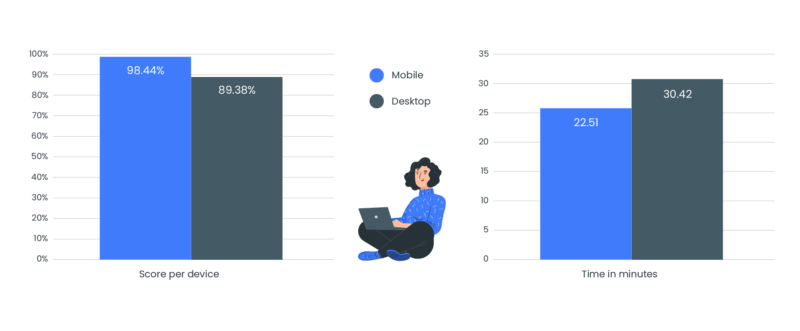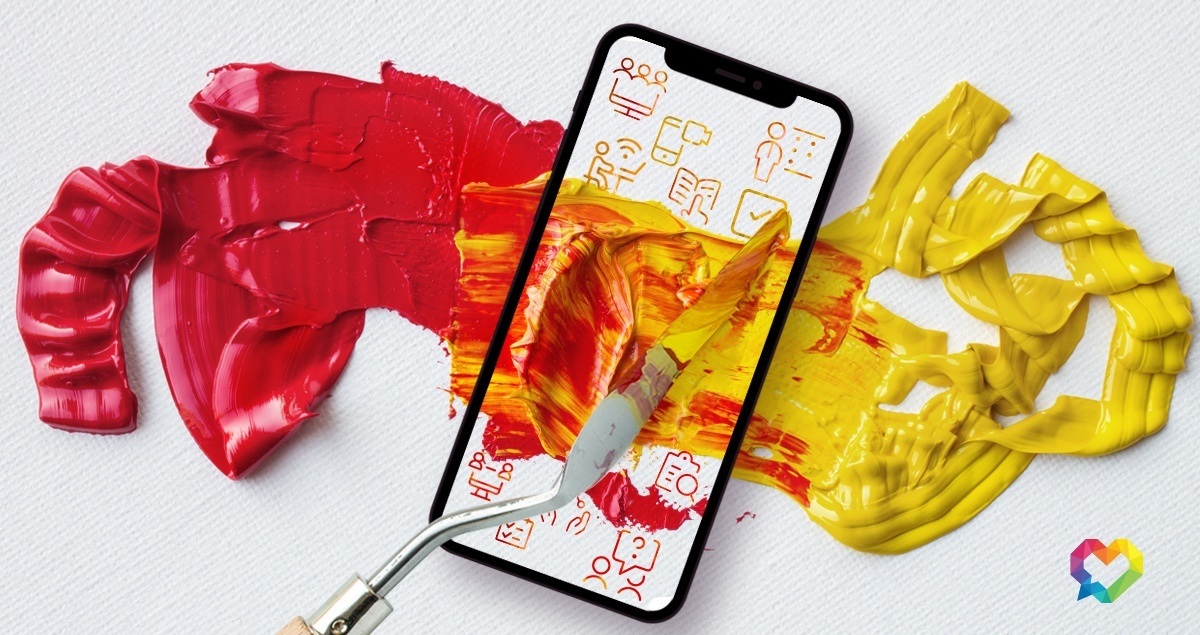Key Findings From A Mobile Learning Study
Mobile learning, or mLearning, is a buzzword in the digital learning industry and one that's not going away anytime soon. We know that clients, and often learners, love the idea of mLearning, either in conjunction with or to replace traditional eLearning which is usually desktop or laptop-based. Other than our enthusiasm for it, what do we really know about mLearning’s effectiveness in comparison to traditional desktop-based eLearning?
To try and understand this, I undertook a year-long comparative study in workplace training, creating a course and extensively testing it on both mobile and desktop participants to see how adults learned differently across different devices. The course was a highly interactive, responsive, mobile-first induction course and was given to two groups of employees to complete, one group being asked to use only mobile devices which included smartphones or tablets, and the other only desktop devices which included personal computers and laptops.

Learners' scores, interactions, behaviors, experiences, and preferences were then examined and compared.
I want to highlight 4 of the findings which are incredibly helpful in informing our mLearning and broader digital learning development:
1. mLearning Is Effective: It Can Even Outperform eLearning
Many people are skeptical of mobile learning (I used to be one of them). A lot of people argue that it cannot compete with desktop-based eLearning, citing a variety of reasons from small screen sizes to the distracting nature of mobile devices.
However, in this study, mobile participants out-performed desktop participants, scoring higher assessment results while spending less time completing the course. This proves that mLearning can be effective, even more so than desktop-based eLearning, if done correctly.

2. Mobile Phones Had Negative Associations And Desktop-Based eLearning Was Preferred
Although mobile learning was effective, there were negative associations with mobile devices in the workplace, with participants seeing them as distracting, more of a social or entertainment device, and feeling rushed when using them. Participants felt as though they’d look bad for being on their phones at work, even if it was to complete training.
These negative associations prevented learners from wanting to use their mobile devices to complete training or any other work task, seeing laptops as the preferred device of the workplace. They even stated that they felt like they were more efficient and more in control when on their laptops.
So even though mLearning can be effective, it wasn't what was preferred. Mobile participants even showed lower satisfaction ratings for the course than desktop participants, with almost half of them stating that they’d have preferred to use their laptops.

This shows us that if we intend on implementing an mLearning intervention, that it's not only the learning and technical aspects we need to consider but also the social aspect, associations with mobile devices, and work environments learners are in. These associations are deep-seated, and learners may not even know they are there. In this study, the majority of employees work from home, which means that their colleagues wouldn't even see them working on their mobile devices. However, they still showed a clear discomfort in using their mobile devices to perform work tasks.
3. mLearning Pedagogy Should Be Considered For All Forms Of Digital Learning
The course that was created was informed by mLearning pedagogy, being user-friendly, unobtrusive, short, simple, highly interactive, visually appealing, segmented into consumable chunks, consistent in navigation and style, targeted and specific.

Participants from both device groups responded incredibly well to these principles, rating the user-friendliness of the course very high and specifically commenting on the interactivity, visual design, simplicity, and length of the course.
This shows us that mLearning pedagogy is not only suited to mobile learning but can be beneficial to all forms of digital learning. Where appropriate, and possible, we should try and implement mobile learning principles to make our digital learning more engaging. We should shift our thinking from designing desktop-first to designing mobile-first learning experiences. This will not only ensure an engaging learning experience, but one that will be effective regardless of the devices learners access it on.
4. mLearning Is Best Suited For Specific Contexts And Content
The last lesson we can take from the study is that mLearning is best suited for content that aligns with mLearning principles and mobile delivery. This is content that is simple, short, straightforward, and doesn’t require a lot of typing. The course in the study was a simple induction course, approximately 25 minutes in length with an MCQ-based assessment, being ideal for mobile delivery.
Participants noted that they would not have wanted to complete a longer, more advanced course with essay-based questions or complex content on their mobile devices.
Likewise, mLearning is also best suited to specific contexts. The participants in this study were all desk-based and did not need the convenience mLearning affords. However, if they were site-based or needed to complete the course after hours and did not have access to laptops, mobile delivery would have been a lot more suited. Similarly, if learners required on-demand training, the ability to quickly refresh their knowledge on a procedure on-site, or using the training more as a job aid, then being able to quickly access the content on their mobile devices would be much more effective than having to find a desktop device.
This shows us that considering the learning context and content is vital in determining how appropriate mLearning is for a specific learning intervention.
So, How Can These Findings Inform Our Learning And Development?
These mobile learning study findings show us that we should:
- Start by considering if there is a need for mobile learning and if the content and context suit it.
- Be aware of the associations surrounding mobile devices and try to mitigate these in our delivery strategy.
- Be confident that if we deliver mLearning effectively that it can, and will, be successful.
- Consider applying mLearning principles and pedagogy, where appropriate, to all forms of digital learning.
What are some of your experiences and lessons learned with mLearning in the workplace? Share them in the comments to help us grow our understanding of mLearning and the value it can bring to our workplace training.









